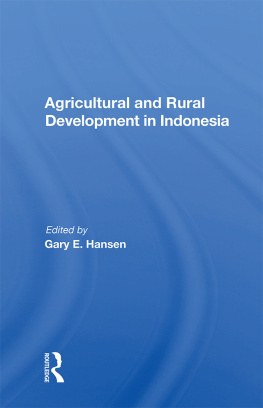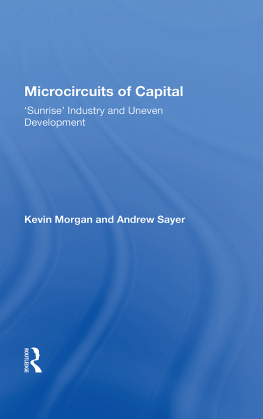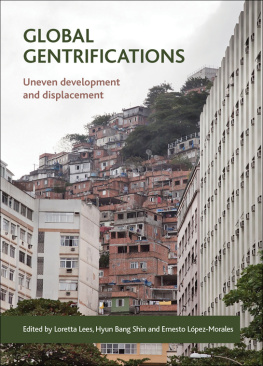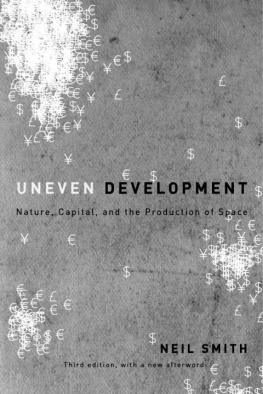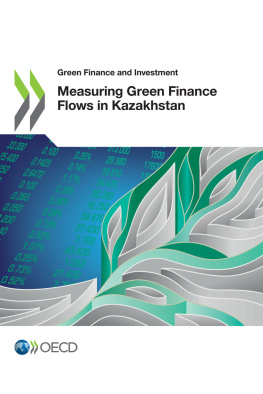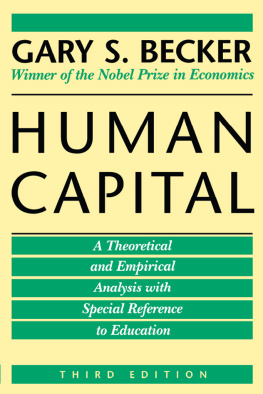Finance Capital and Uneven Development
First published 1987 by Westview Press
Published 2018 by Routledge
52 Vanderbilt Avenue, New York, NY 10017
2 Park Square, Milton Park, Abingdon, Oxon OX14 4RN
Routledge is an imprint of the Taylor & Francis Group, an informa business
Copyright 1987 by Taylor & Francis
All rights reserved. No part of this book may be reprinted or reproduced or utilised in any form or by any electronic, mechanical, or other means, now known or hereafter invented, including photocopying and recording, or in any information storage or retrieval system, without permission in writing fromthe publishers.
Notice:
Product or corporate names may be trademarks or registered trademarks, and are used only for identification and explanation without intent to infringe.
Library of Congress Cataloging-in-Publication Data
Green, Gary P.
Finance capital and uneven developaent/by Gary P. Green.
p. cm..--(Westview special studies in social, political, and
economic development)
ISBN 0-8133-7420-0
1. Financial institutions--United States. 2. Credit--United
States. 3. Agricultural credit--United States. 4. Southern States
-Economic conditions--Regional disparities. 5. Debts, External
-Developing countries. I. Title. II. Series.
HG181.G72 1987
332.70973--dcl9
87-22945
CIP
ISBN 13: 978-0-3670-1394-3 (hbk)
Many people have contributed to the completion of this manuscript. Much of the theoretical material in this book was developed in my doctoral dissertation on rural banks and the changing structure of agriculture. I want to thank Bill Heffernan for providing a stimulating environment for my graduate work at the University of Missouri.
The staff at the Institute of Community and Area Development (!CAD) at the University of Georgia were instrumental in the production of the manuscript. In particular, Linda Edwards conscientiously typed countless drafts for me. Lynn Igoe, at the University of North Carolina, carefully edited the manuscript and made many useful suggestions.
I want to thank my colleagues in the Sociology Department at the University of Georgia. They have provided an excellent intellectual environment and social support for my work. Phil McMichael read the entire manuscript and made many useful suggestions. Cindy Holiny, Hea-in Choi, and Farshad Araghi provided research assistance for several of the chapters.
I know that the manuscript could not have been completed without the help of Leann Tigges. I can never properly express my appreciation for Leanns support and encouragement. Leann carefully read the manuscript and helped me work through many of the ideas in the book. She has been a most loyal supporter.
Gary P. Green
1
Towards a Political Economy of Credit
Uneven development is a prominent feature of advanced capitalism, characterized by rapid growth in some sectors and regions and decline in others. In the United States, loss of jobs in the auto and steel industries and growth in other industries, particularly in the service sector, have been well documented (Bluestone and Harrison, 1982). The rise of the New South and deindustrialization in the Rust Belt are examples of this process working on a regional level. Finally, the growing disparity in growth rates between advanced and less developed societies is an example of uneven development occurring on a global level.
Among social scientists are many disputes over the causes and consequences of uneven development. Neoclassical economists and modernization theorists argue that differences in the rate of development are caused by factors influencing the efficiency of production and distribution (e.g., productivity, access to resources, proximity to markets). These theorists assume that the benefits of industrialization will eventually reach all groups, regions, and sectors. Technological advancements are a key to reducing differences in productivity, the demand for raw materials, and the importance of proximity to markets. Therefore, social and economic factors prohibiting technological change (e.g., traditional values and institutions) must be changed to spur development. Development leads to greater specialization of tasks and an increased division of labor. Consequently, unfettered capitalism eliminates significant differences in the rate of development between economic sectors and regions. Some level of unevenness, however, is desirable if capitalism is to work efficiently.
Keynesian economists and liberal social theorists argue that institutional barriers in capitalism prevent lagging regions, industries, and nations from catching-up with developed sectors. Often this relationship between developed and underdeveloped sectors is characterized by these theorists as dependent or exploitative. Through a process of unequal exchange, the dominant sector prospers at the expense of other sectors. Technological development, according to these theorists, exacerbates the tendencies toward uneven development in capitalism by increasing the mobility of capital. In addition, unequal access to information and to credit becomes more critical in determining the rate of development when new technology is introduced. According to Keynesian economists, capitalism is basically sound, but it requires some adjustments. Uneven rates of development can be reduced by state action or institutional change not requiring a restructuring of the entire economic system. The theorists often identify the state as a key factor in either facilitating or retarding development. A strong state will promote the types of changes necessary for development to occur.
Radical political economists and Marxists take a much different stance toward analyzing uneven development. These theorists argue that uneven development is a product of historical forces, such as class conflict (Fox, 1978) or political conflict (Markusen, 1979; 1980). Uneven development is a consequence of obstacles capitalists encounter in their drive to expand. These obstacles may be related to problems associated with production relations or circulation. These problems develop for several reasons: overproduction or underconsumption, rising wages, or technological advances. Different historical conditions have required different strategies by the capitalist class. According to Marx, there is a tendency for capitalism to produce a growing disparity in the rates of development among sectors and regions. This position differs with the neoclassical position by focusing on the social and historical context in which development occurs. In other words, these social and historical dimensions influence the character and extent of development. In addition, technology and state policy reflect the class character of capitalism. Thus, technological change tends to exacerbate uneven development in capitalism; and uneven development is facilitated by state policy promoting the conditions for technological change. For radical theorists, the key to eliminating uneven development is abolishing the class character of capitalism.
In this analysis, I adopt the radical position by demonstrating how finance capital contributes to uneven development among economic sectors, regions, and nations. The structure of finance capital distributes capital inefficiently and inequitably. In addition, the relationship between finance capital and the state limits the possibilities of political action to alleviate the problems of uneven development caused by finance capital. Although the analysis is largely structural, I believe a radical analysis of development can incorporate the role of subjects.



